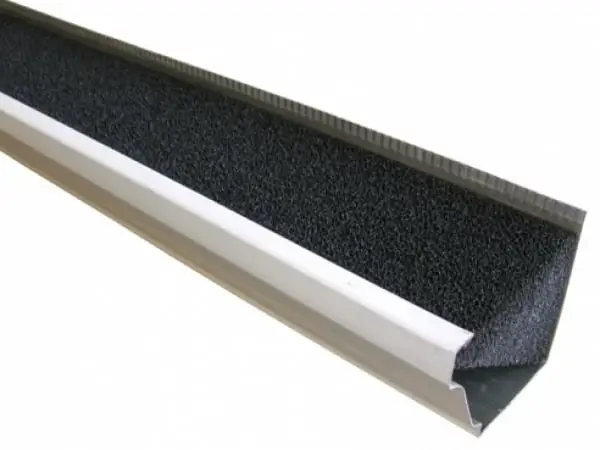How to Cut Gutters and Downspouts: A Step-by-Step Guide | HomeTips

Summarize this content to 100 words 3, /about-usExpert step-by-step advice on how to cut aluminum, vinyl, and steel rain gutters and downspouts, using tin snips, utility knife, or a saw. If you’re installing or repairing your home’s rain gutters, it’s sometimes necessary to cut new pieces to length or cut out a section for replacement. In this DIY step-by-step guide, we’ll walk you through the process of cutting gutters and downspouts with precision and accuracy. We’ll also discuss the most common gutter materials and how the material affects cutting methods.Gutters and downspouts are made from aluminum, vinyl, and steel. The main difference between cutting a downspout versus a gutter is the shape. Gutters typically have a trough-like shape, running horizontally along the roofline. Downspouts (basically a vertical gutter that directs water down and away from the house) have a vertical, cylindrical, or rectangular shape—they are usually narrower than gutters.Let’s get started!1. Gather the Necessary ToolsStart by making sure you have the following tools ready:Tape measureMarker or pencilSharp utility knifeHack saw or reciprocating saw with a metal-cutting blade, or aviation (“tin”) snipsSafety gogglesHeavy work glovesSawhorses and a board, or a sturdy work surfaceIf you have a reciprocating saw and the right blades for the job, this is usually the easiest tool to use for cutting. If you don’t have this tool, aviation snips work well for cutting aluminum or vinyl (PVC) and cost about $18. When cutting thin vinyl, you may be able to use a sharp utility knife.Aviation snips are an affordable tool (about $18) for cutting cutters and downspouts. Don Vandervort, HomeTips © 1997 to 2023 | HomeTips2. Consider the Gutter MaterialDifferent gutter materials require different cutting techniques. Here are the most common gutter materials, along with some notes about the tools and techniques to use for cutting each material: Aluminum gutters are most common. They’re lightweight and corrosion-resistant. When cutting aluminum gutters:Use aviation snips, a hacksaw, or a reciprocating saw fitted with a fine-toothed metal-cutting blade.Be careful not to apply excessive force—aluminum is very soft. It can dent or deform easily.Vinyl gutters are a DIY favorite because they’re lightweight, relatively affordable, and the easiest material for homeowners to install. When cutting vinyl gutters:Use a sharp utility knife, hacksaw, or a reciprocating saw with a sharp, fine-toothed blade.Apply light but steady pressure to avoid cracking the vinyl.Steel gutters are strong, but they’re less popular for residential use, mostly because of their cost and the fact that they can rust if not maintained. When cutting steel gutters:Use a reciprocating saw with a bi-metal blade designed for cutting through sheet metal.Apply consistent pressure for clean, accurate cuts.Take extra caution as steel gutters may have sharp edges after cutting—file off sharp edges. For safety: Always wear safety glasses and work gloves when cutting gutters and downspouts. Use caution when working at heights or on ladders. Always follow proper ladder safety guidelines.3. Preparing to Cut a Gutter or DownspoutBefore you can cut a gutter or downspout that’s attached to the house, you’ll need to disconnect it—at least partially. If you can take it down reasonably easily, it will be easier to work with the gutter or downspout placed on a board or plywood sheet over a pair of sawhorses. Otherwise, you can cut the partially-disconnected section in place.For a gutter, use a pry bar or old screwdriver to loosen and remove any screws or brackets that secure the gutter to the fascia board. Carefully detach the gutter from any brackets, starting from one end and working your way along the section. Be careful not to damage the fascia board.Types of Gutter Hangers Don Vandervort, HomeTips © 1997 to 2023 | HomeTips For a downspout, you may need to remove screws, clips, or downspout straps that connect the downspout to the wall with a pry bar or screwdriver. Gently pull the downspout away from the attachment points, being careful not to damage the wall surface.Downspout Connections Don Vandervort, HomeTips © 1997 to 2023 | HomeTips4. Measure and MarkCarefully measure the length needed for your gutter or downspout section using a tape measure. Mark the measured length all the way around the gutter or downspout, using a marker or pencil and a combination square. Double-check your measurements.5. Secure the Gutter or DownspoutIdeally, place the gutter or downspout securely on sawhorses or a sturdy work surface. This provides stability and ensures clean and controlled cuts. If the gutter or downspout is still partially attached, support it securely with one hand while you cut with the other hand. Keep a secure grip on the gutter.6. Cut the Gutter or DownspoutWhether you’re cutting a section out of an existing gutter or cutting a new section to size, follow these steps to cut the gutter or downspout:Put on protective safety glasses and work gloves.Using the appropriate cutting tool discussed in Step 2, carefully cut along the marked line. When using a saw, apply gentle pressure and let the saw do the work, taking your time so you get a straight, clean cut. When using tin snips, place the cutting blades on the marked cutting line, apply steady and controlled pressure to the handles, squeezing them together to make the cut. Start at one end of the marked line and work your way along, following your cutting guideline.After cutting the gutter or downspout, remove any roughness or burrs on the cut edges, using a file or sandpaper to prevent cuts or scratches during installation.7. Test Fit and InstallOnce the gutter or downspout section is cut and smoothed, test its fit. Make any necessary adjustments before installing the section using appropriate connectors, brackets, or sealants as per the manufacturer’s instructions. About Don VandervortDon Vandervort has developed his expertise for more than 30 years as a remodeler and builder, Building Editor for Sunset Books, Senior Editor at Home Magazine, author of more than 30 home improvement books, and writer of countless magazine articles. He appeared for 3 seasons on HGTV’s “The Fix,” and served as MSN’s home expert for several years. Don founded HomeTips in 1996. Read more about Don Vandervort
Source link
